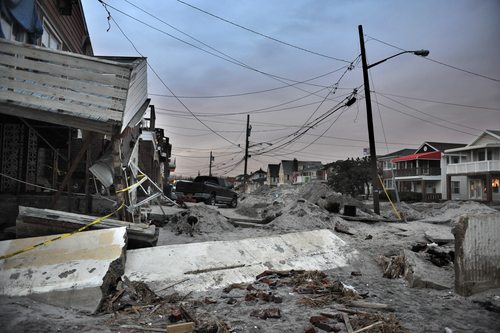
Anton Oparin / Shutterstock.com
February 12, 2015; BizTech
Think about drones, mesh networks, and ride-sharing apps. Mix them with Hurricane Sandy, mudslides in Washington State, and Oklahoma tornadoes. Add volunteers. What’s your result? A fairly new nonprofit, Field Innovation Team (FIT), which uses incredible technology creations to aid with disaster relief. Their goal: Technology and innovation as a resource in solving emergency disaster problems.
After Hurricane Sandy, mesh networks were spread around Red Hook by volunteers to increase area bandwidth so victims could communicate with their families and loved ones during the crisis. Drones flew over the Washington State mudslides, reading the landscape and creating 3-D imagery that was used to make command decisions. Ride-sharing apps were created by the FIT team in conjunction with a Drupal conference, resulting in assistance in Oklahoma following a major tornado.
“I don’t know of any time in history where a federal agency like FEMA has tasked a team to innovate in a disaster and to solve in real time like this on the scale that we did,” says Desiree Matel-Anderson, former Chief Innovation Advisor with FEMA and current “Chief Wrangler” at FIT.
Sign up for our free newsletters
Subscribe to NPQ's newsletters to have our top stories delivered directly to your inbox.
By signing up, you agree to our privacy policy and terms of use, and to receive messages from NPQ and our partners.
According to FIT’s website, their process mixes ideas from various fields: robotics, design, community justice, and technology. The volunteer roster includes a consortium of technologists, artists, pilots, communication infrastructure experts, environmentalists and community organizers.
As an incubator of technological innovations, there’s a variety of “robotic animals” in development at FIT. While these are generally used in disaster recovery, FIT received phone calls requesting aid during the recent border crisis wherein young people from Central America were seeking refuge in the U.S. There was enough food and shelter, but resources were needed to help entertain and educate the children. The result was a “robotics petting zoo,” with children interacting with rolling, crawling, and flying robots.
FIT is preparing to take its zoo to South by Southwest (SXSW). An intro video featuring “Bujold,” “Survivor Buddy,” and “McCaffrey” and their skills can be found here:
—Jeanne Allen











